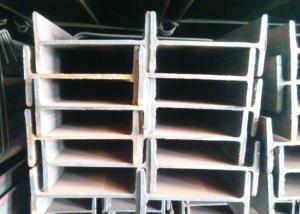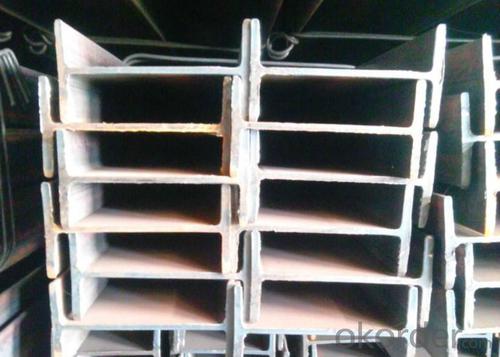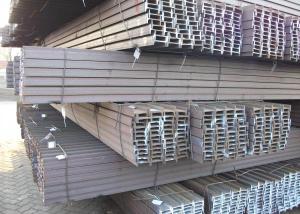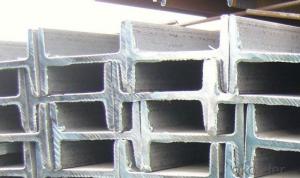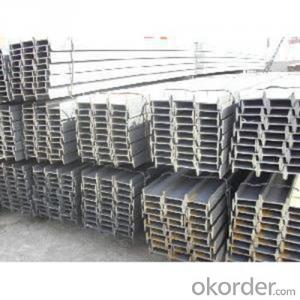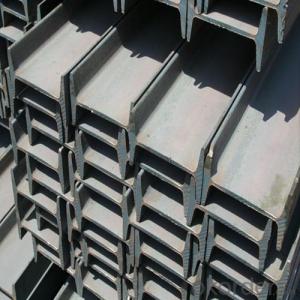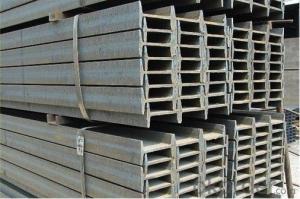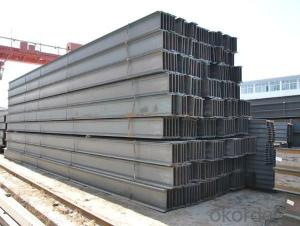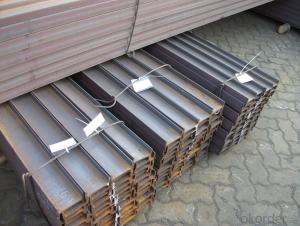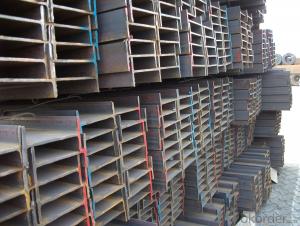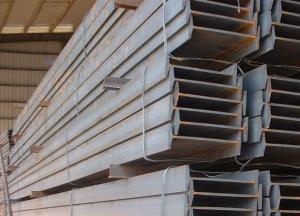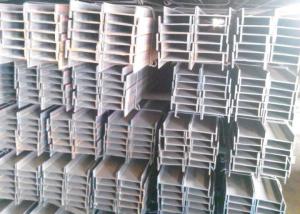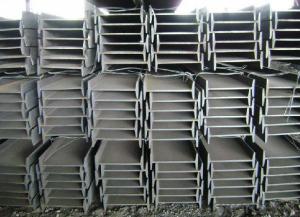IPEAA Beam
- Loading Port:
- Tianjin Port, China
- Payment Terms:
- TT or LC
- Min Order Qty:
- 10MT m.t.
- Supply Capability:
- 10000MT m.t./month
OKorder Service Pledge
OKorder Financial Service
You Might Also Like
Specifications of IPEAA Beam
1.Standard: EN10025, GB Standard, ASTM
2.Grade: Q235B, Q345B, SS400, ASTM A36, S235JR, S275JR
|
Alloy No. |
Grade |
C |
Mn |
S |
P |
Si |
|
Q235 |
B |
0.12%-0.20% |
0.3%-0.7% |
<=0.045% |
<=0.045% |
<=0.3% |
4.Sizes: 80mm-200mm
|
Dimensions | |||||
|
|
h |
b |
s |
t |
Mass Kg/m |
|
IPEAA80 |
80 |
46 |
3.20 |
4.20 |
4.95 |
|
IPEAA100 |
100 |
55 |
3.60 |
4.50 |
6.72 |
|
IPEAA120 |
120 |
64 |
3.80 |
4.80 |
8.36 |
|
IPEAA140 |
140 |
73 |
3.80 |
5.20 |
10.05 |
|
IPEAA160 |
160 |
82 |
4.00 |
5.60 |
12.31 |
|
IPEAA180 |
180 |
91 |
4.30 |
6.50 |
15.40 |
|
IPEAA200 |
200 |
100 |
4.50 |
6.70 |
17.95 |
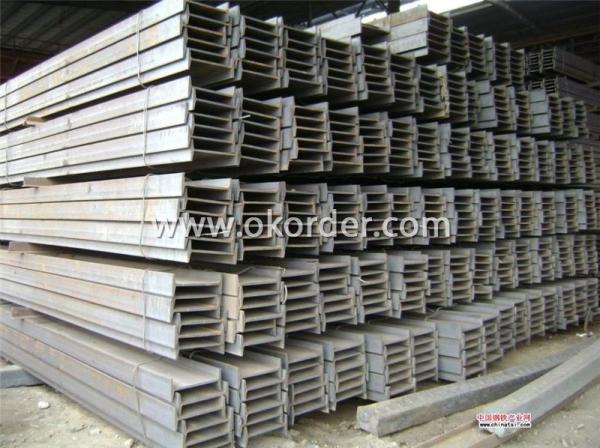
Applications of IPEAA Beam
1. structure construction and electronic tower building construction
2. bridge, trestle, autos, brackets, machinery
3.It is widely used in various building structures and engineering structures such as roof beams, bridges, transmission towers, hoisting machinery and transport machinery, ships, industrial furnaces, reaction tower, container frame and warehouse etc.
Package & Delivery Terms of IPEAA Beam
1. Packing: it is nude packed in bundles by steel wire rod
2. Bundle weight: not more than 3.5MT for bulk vessel; less than 3 MT for container load
3. Marks:
Color marking: There will be color marking on both end of the bundle for the cargo delivered by bulk vessel. That makes it easily to distinguish at the destination port.
Tag mark: there will be tag mark tied up on the bundles. The information usually including supplier logo and name, product name, made in China, shipping marks and other information request by the customer.
If loading by container the marking is not needed, but we will prepare it as customer request.
4. All the IPEAA Beams will be delivered to the port of Tianjin within 45 days after receiving the Original L/C at sight or the advance payment by T/T.
5. Transportation: the goods are delivered by truck from mill to loading port, the maximum quantity can be loaded is around 40MTs by each truck. If the order quantity cannot reach the full truck loaded, the transportation cost per ton will be little higher than full load.
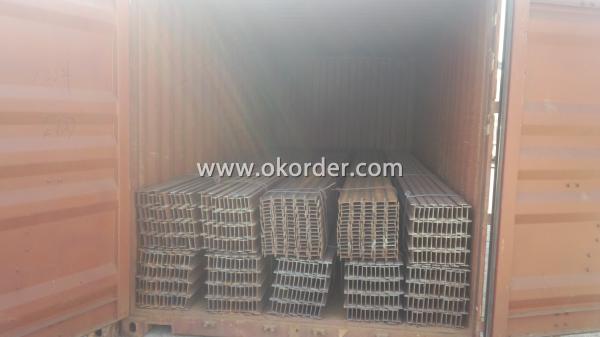
Production Flow of IPEAA Beam
Material prepare (billet) —heat up—rough rolling—precision rolling—cooling—packing—storage and transportation
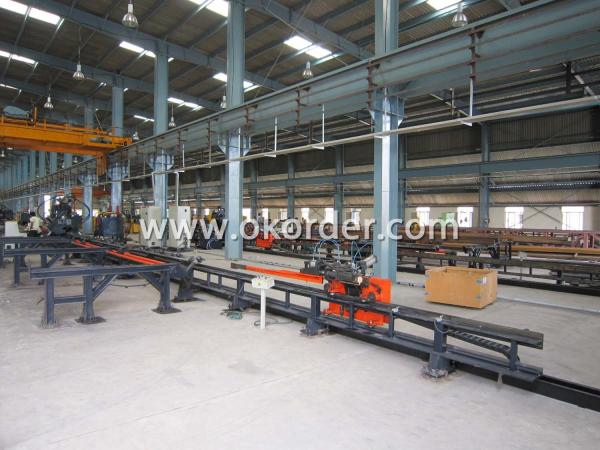
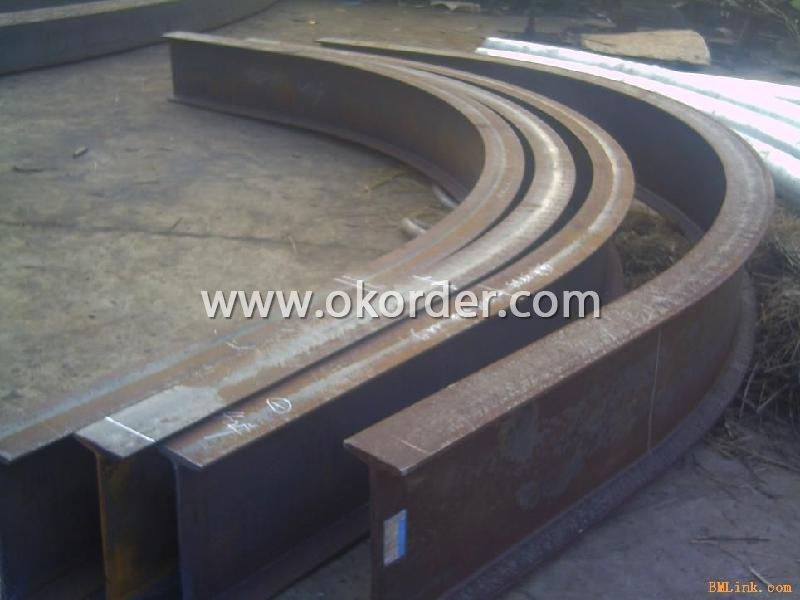
- Q: How do I calculate the difference between rail steel and angle steel, channel steel and I-beam?
- Rail steel is of high strength low alloy steel, it also has a special performance requirements, is a small thermal expansion coefficient, which is now the high-speed driving conditions, in order to reduce the collision between the wheel and rail wear and rail length ratio
- Q: What does the beam size "H500*250*8*10*10" mean?
- You mean this is the expression of H steel:The sections of section H steel can be represented by the following code names: h*b*tw*t.Section height of h:H steelSection width of section b:H steelThickness of center web of tw:H steelT:H steel wing thickness (that is, up and down the two plates)This is very easy to understand, you say H500*250*8*10*10, that is, H steel section of high 500mm, wide 250mm, the middle plate thickness 8mm, two plates, 10mm thick. You finally have a 10, that estimate of 10 fast, that is the number of H steel.
- Q: Can steel I-beams be used in temporary or relocatable structures?
- Yes, steel I-beams can be used in temporary or relocatable structures. Steel I-beams are known for their strength and durability, making them a popular choice for various construction projects. They can be easily disassembled and reassembled, allowing for easy relocation or temporary usage. Additionally, steel I-beams offer excellent load-bearing capabilities, making them suitable for supporting the weight of the structure. Their versatility and adaptability make steel I-beams a reliable and efficient choice for temporary or relocatable structures.
- Q: Can steel I-beams be welded together?
- Indeed, it is possible to weld steel I-beams together. This method is widely used to combine multiple I-beams into a larger and sturdier structural element. Typically, the procedure involves merging the beams using high-temperature welding techniques like arc welding or gas welding. Through welding, the beams are not only securely joined but also retain their ability to carry loads seamlessly across the joint. Nevertheless, it is crucial to have a certified welder perform the welding and adhere to the appropriate procedures and techniques to uphold the welded I-beams' structural integrity and safety.
- Q: How do steel I-beams handle vibrations and dynamic loads?
- The inherent structural characteristics of steel I-beams make them effective in handling vibrations and dynamic loads. This is attributed to the shape of an I-beam, which consists of flanges and a web that provide a high level of stiffness and strength. As a result, I-beams are capable of withstanding dynamic loads and vibrations without deforming or failing. One of the key factors that enables I-beams to handle vibrations is their high moment of inertia. The shape of an I-beam distributes the material away from the neutral axis, increasing resistance to bending. This stiffness prevents deformation or failure when subjected to vibrations or dynamic loads. Furthermore, the flanges of the I-beam reinforce its overall strength. Acting like a protective layer, the flanges help distribute the loads evenly along the beam, reducing stress concentration points. This characteristic effectively absorbs and disperses the energy generated by vibrations or dynamic loads, preventing localized failures. Steel, as a material, also plays a significant role in the I-beam's ability to handle vibrations and dynamic loads. Its high strength-to-weight ratio allows for the creation of lightweight yet strong structures. The durability and resilience of steel make I-beams suitable for withstanding repetitive loads and vibrations without significant deformation or fatigue. Additionally, the design and fabrication of I-beams take into account the anticipated loads and vibrations that the structure will experience throughout its lifetime. Engineers carefully consider factors such as the expected frequency, amplitude, and duration of the vibrations, as well as any potential resonance effects. This allows for the optimization of the I-beam's design to effectively handle specific vibrations and dynamic loads. In conclusion, steel I-beams are well-equipped to handle vibrations and dynamic loads due to their high moment of inertia, the reinforcement provided by their flanges, and the inherent strength and resilience of steel as a material. Through meticulous design and engineering, these beams can effectively absorb and distribute the energy generated by vibrations, ensuring the stability and longevity of the structure they support.
- Q: Can steel I-beams be used for concert venues?
- Yes, steel I-beams can be used for concert venues. In fact, they are commonly used in the construction of large-scale structures such as stadiums, arenas, and concert halls. Steel I-beams provide excellent structural support and have a high load-bearing capacity, making them ideal for venues that need to accommodate a large number of people and heavy equipment. They can be used to create the framework for the roof, walls, and seating areas, ensuring a safe and sturdy structure for concerts. Additionally, steel I-beams can be easily customized and fabricated to meet specific design requirements, allowing architects and engineers to create unique and visually appealing concert venues.
- Q: What are the design considerations for steel I-beams in high-wind areas?
- In high-wind areas, design considerations for steel I-beams primarily revolve around ensuring sufficient strength and stiffness to resist the imposed wind loads. Factors such as wind speed, direction, building height, and terrain play a crucial role in determining the design requirements. Key considerations include selecting appropriate steel grades, determining the correct size and spacing of I-beams, designing adequate connections, and applying appropriate bracing systems to enhance the overall structural stability against wind forces. Additionally, the design should also account for factors like potential vibrations, fatigue, and corrosion resistance to ensure long-term performance and safety.
- Q: Are steel I-beams cost-effective compared to other structural options?
- Yes, steel I-beams can be considered cost-effective when compared to other structural options. Steel is a highly durable and versatile material that offers several advantages in terms of strength, load-bearing capacity, and longevity. Steel I-beams are known for their high strength-to-weight ratio, which means they can support heavy loads while minimizing the amount of material needed. This not only reduces construction costs but also allows for more efficient use of the available space. Additionally, steel is a readily available material, which makes it easier and more cost-effective to source compared to other options. It is also highly recyclable, making it an environmentally friendly choice. The durability of steel I-beams ensures a long lifespan, reducing the need for frequent repairs or replacements, further contributing to their cost-effectiveness. Moreover, steel structures can be prefabricated, which reduces construction time and labor costs. The ease of assembly and modular nature of steel I-beams make them suitable for various applications, including residential, commercial, and industrial projects. However, it is important to note that the cost-effectiveness of steel I-beams can vary depending on several factors such as the specific project requirements, design complexity, and regional availability of materials. It is advisable to consult with structural engineers and construction professionals to assess the specific needs and constraints of a project and determine the most cost-effective solution.
- Q: How is I-beam connected?
- Connections between steel column and steel beam:1. The steel column is connected with the steel beam and the 2 stiffened plate is arranged in the direction of the steel beam. The distance between the stiffener and the steel beam is the height of the stiffener;2 、 steel column stiffener plate welding plate (open bolt hole), connecting plate height = steel beam web height;3. The connection between the steel beam and the steel column is bolted.
- Q: Can Steel I-Beams be used for food processing facilities?
- Steel I-Beams have the ability to be utilized in food processing facilities. Their strength, durability, and load-bearing capabilities make them a common choice in various industrial applications. In food processing facilities, where there is often heavy machinery and equipment, Steel I-Beams can offer the necessary structural support. Furthermore, steel's resistance to corrosion is particularly important in food processing environments that prioritize hygiene and cleanliness. The adaptability of Steel I-Beams also permits flexible design options, ensuring that the facility can be tailored to meet specific requirements. Overall, Steel I-Beams are an exceptional option for food processing facilities due to their strength, durability, resistance to corrosion, and versatility.
1. Manufacturer Overview
| Location | Tangshan, China |
| Year Established | 2009 |
| Annual Output Value | Above US$ 230 Million |
| Main Markets | Mid East; Southeast Asia; Korea |
| Company Certifications | ISO 9001:2008; |
2. Manufacturer Certificates
| a) Certification Name | |
| Range | |
| Reference | |
| Validity Period |
3. Manufacturer Capability
| a) Trade Capacity | |
| Nearest Port | Tianjin; |
| Export Percentage | 81% - 90% |
| No.of Employees in Trade Department | 21-50 People |
| Language Spoken: | English; Chinese; |
| b) Factory Information | |
| Factory Size: | Above 500,000 square meters |
| No. of Production Lines | 1 |
| Contract Manufacturing | OEM Service Offered; |
| Product Price Range | Average |
Send your message to us
IPEAA Beam
- Loading Port:
- Tianjin Port, China
- Payment Terms:
- TT or LC
- Min Order Qty:
- 10MT m.t.
- Supply Capability:
- 10000MT m.t./month
OKorder Service Pledge
OKorder Financial Service
Similar products
Hot products
Hot Searches
Related keywords
